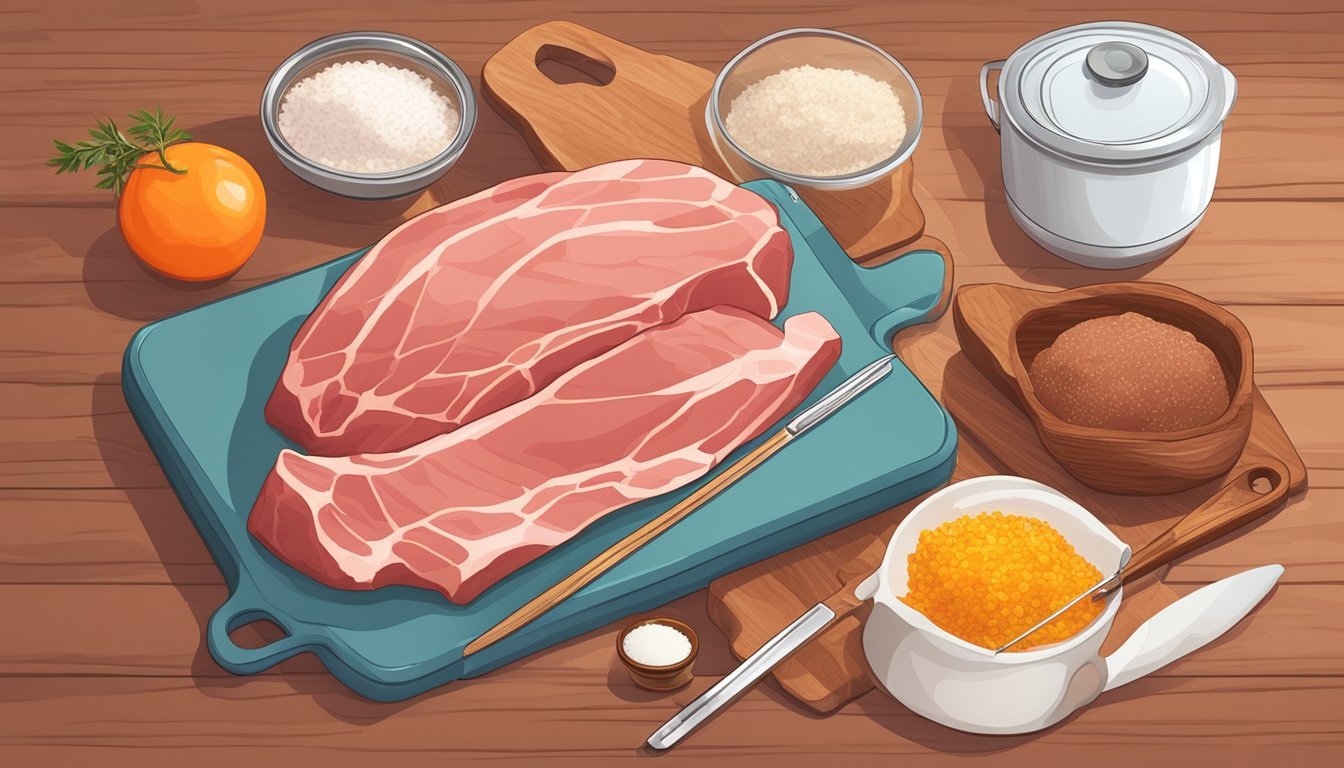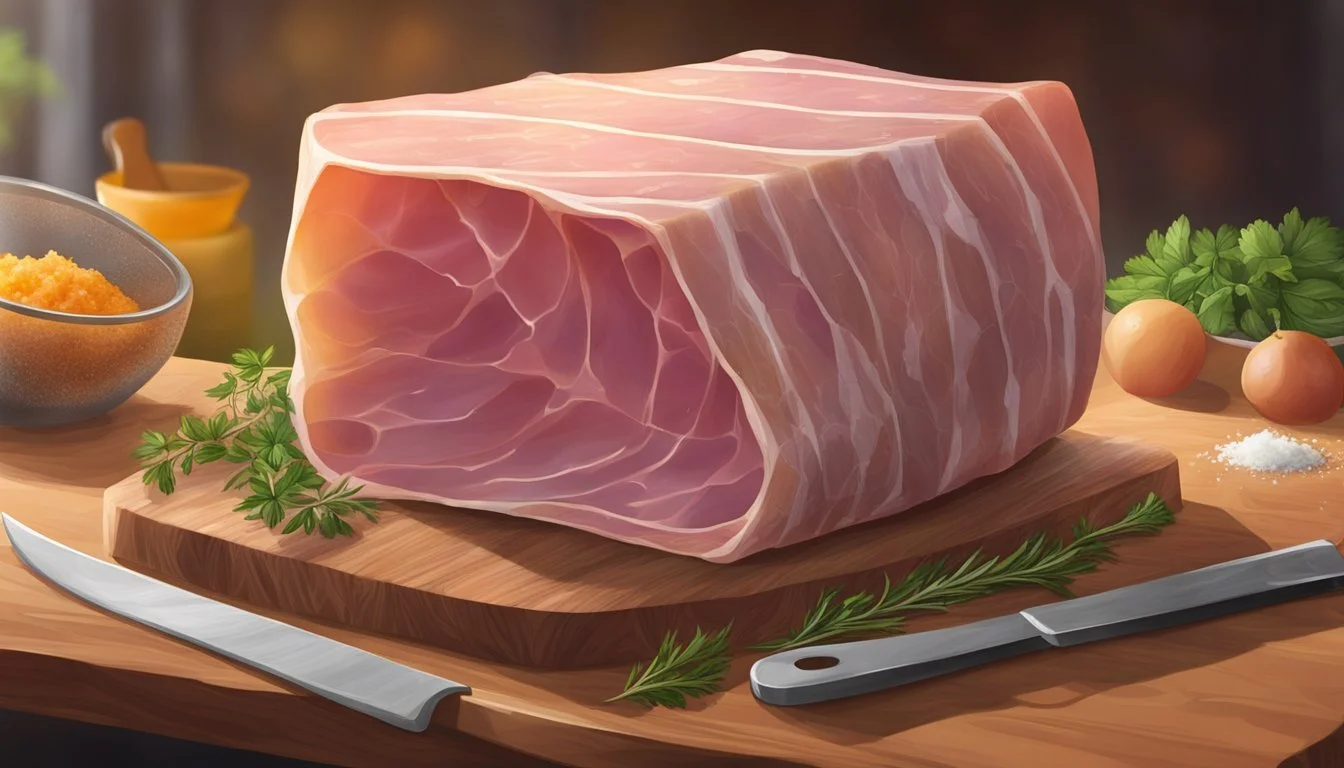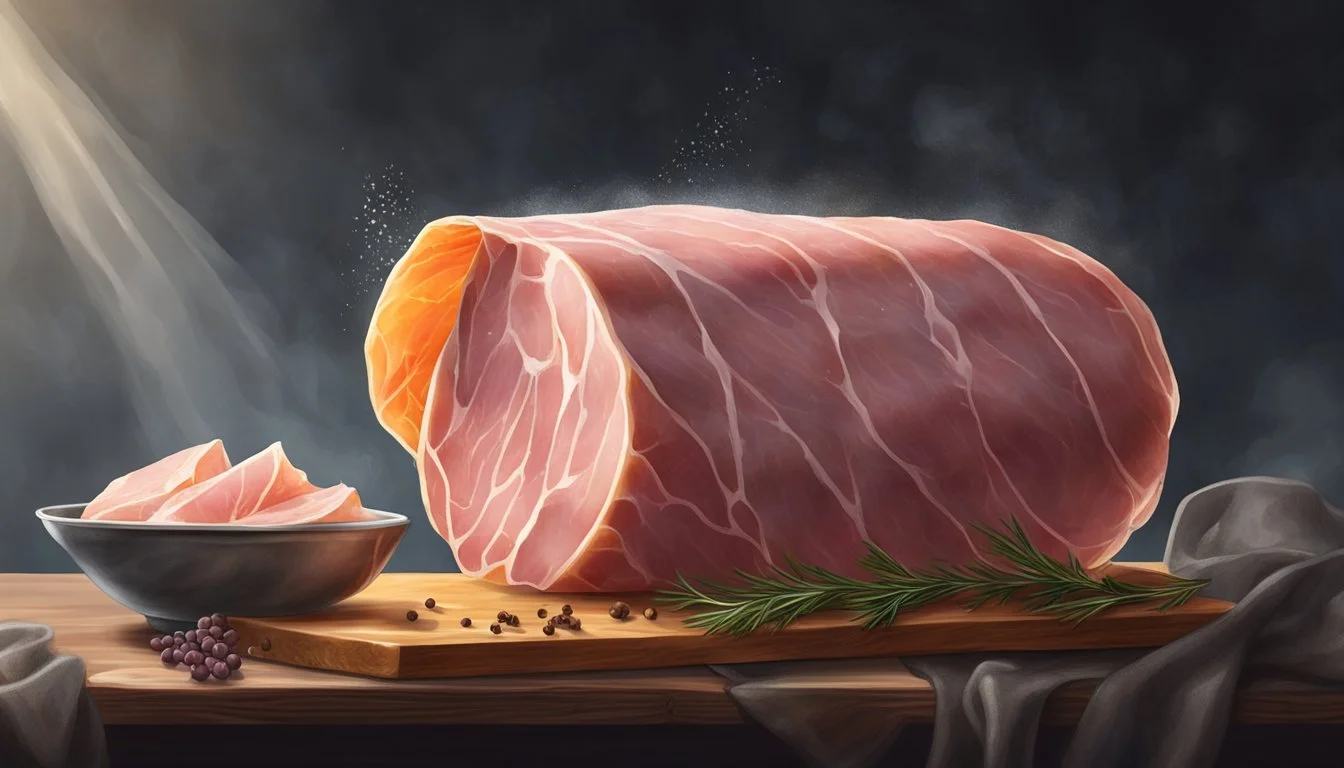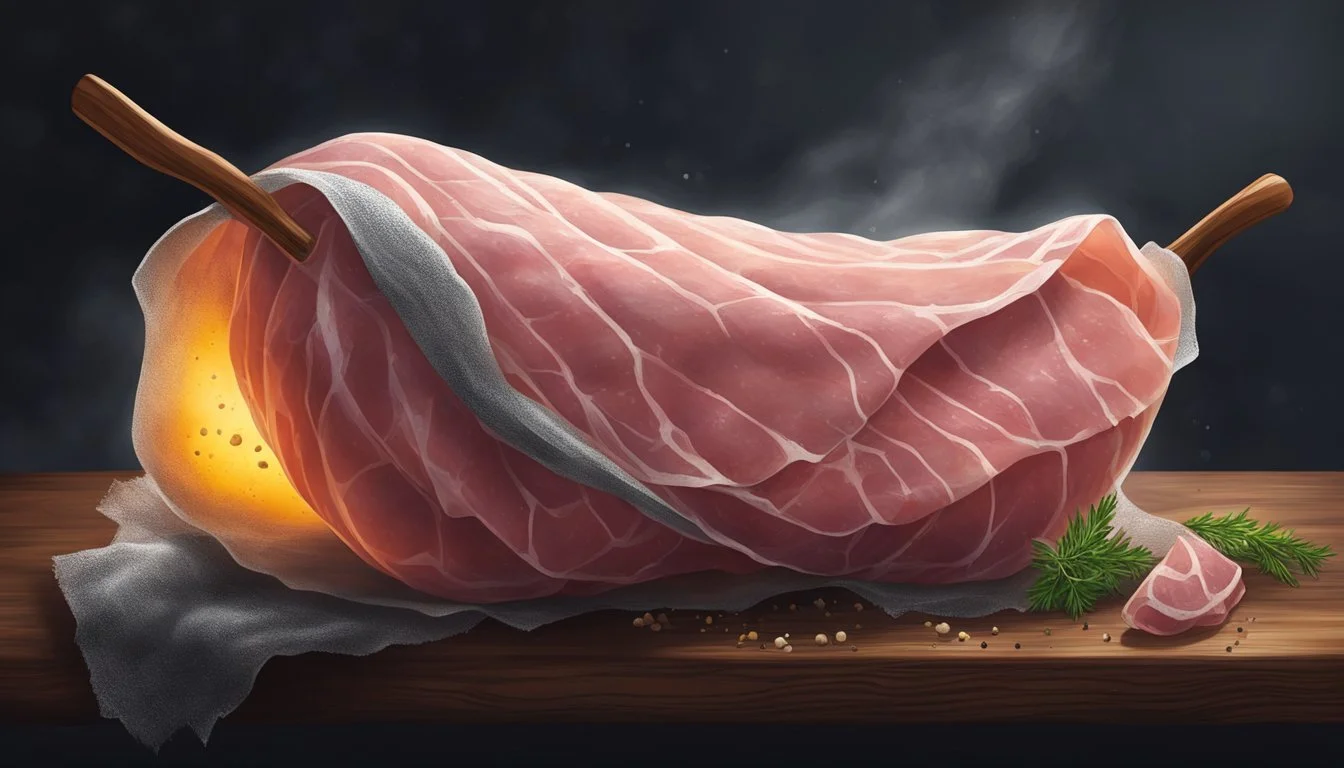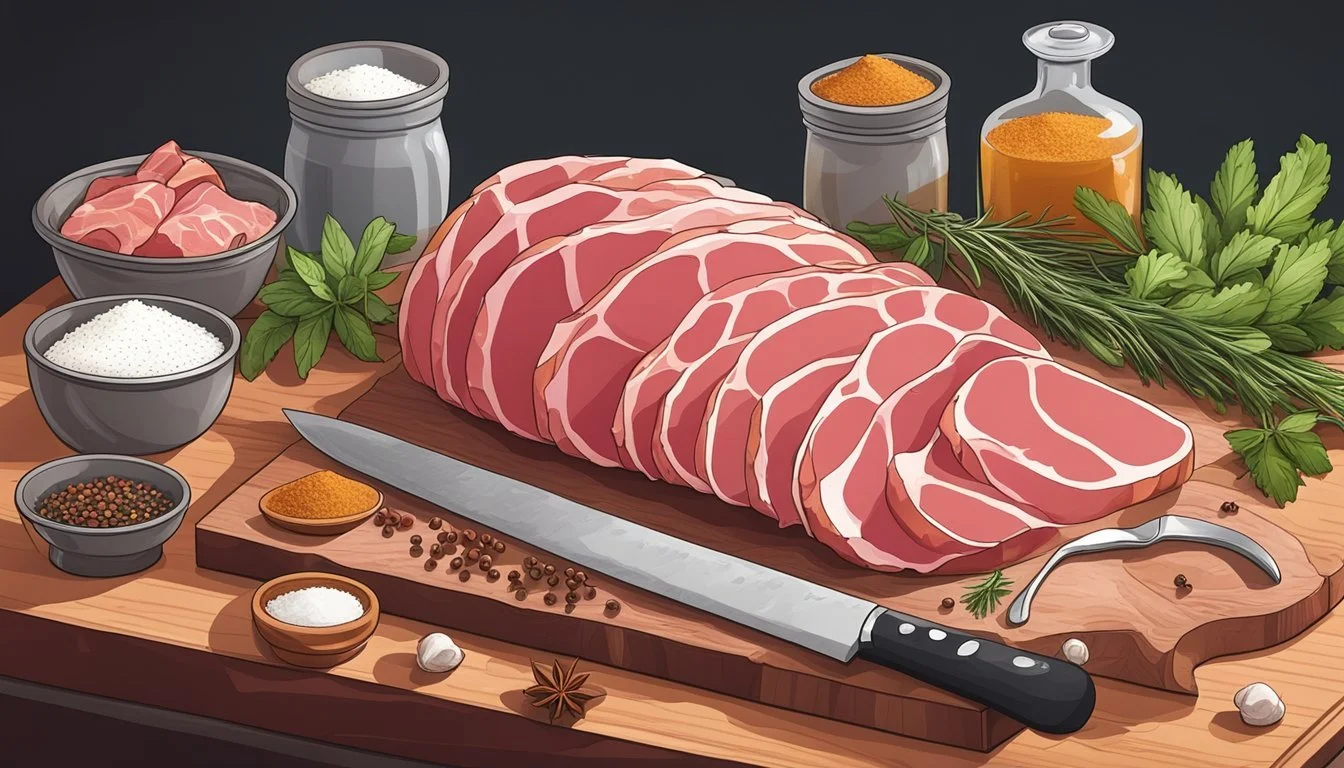How to Make Prosciutto Cotto
Your Guide to Homemade Cooked Ham
Prosciutto cotto, which translates to 'cooked ham' in Italian, is a staple of Italian cuisine known for its delicate flavor and tender texture. Unlike its cured counterpart, prosciutto crudo, prosciutto cotto is typically seasoned and cooked, which results in a milder taste. Making prosciutto cotto at home can be a rewarding experience for those who appreciate the art of traditional Italian cooking. This Italian delight requires attention to detail and patience, but the end result is a savory and versatile addition to many dishes.
The process of making prosciutto cotto at home begins with selecting the right cut of pork. The hind leg of the pig is commonly used for this purpose. It is trimmed into shape and then undergoes a carefully controlled cooking process. This often involves a lengthy period of seasoning to infuse the meat with flavors before it is slowly roasted at a low temperature. This allows the meat's natural juices to tenderize it from the inside out, ensuring the prosciutto cotto's signature moistness and rich flavor.
Once cooked, prosciutto cotto is left to rest, allowing its flavors to mature and stabilize. It can then be thinly sliced and served as part of an antipasto platter, incorporated into sandwiches, or used to enhance various recipes. The versatility of prosciutto cotto solidifies its position as a celebrated component of food culture in Italy and beyond. Whether enjoyed on its own or as part of a more complex dish, prosciutto cotto offers a taste of Italian tradition that can be brought into home kitchens around the world.
Understanding Prosciutto
Prosciutto is a celebrated Italian ham, both in its cooked and uncooked forms, each possessing distinctive characteristics and culinary uses.
Types of Prosciutto
Prosciutto di Parma: Often referred to simply as Parma Ham, it is cured for a minimum of 12 months and is renowned for its delicate, sweet flavor.
Prosciutto di San Daniele: Aged for at least 18 months, it offers a milder taste in comparison to Parma Ham and is typically enjoyed thinly sliced.
Prosciutto Toscano: This prosciutto is noted for its mild, slightly smoky flavor, deriving from the unique process of seasoning used in Tuscany.
Prosciutto Cotto vs. Prosciutto Crudo
Prosciutto cotto, or cooked ham, is lighter in flavor compared to its counterpart, prosciutto crudo, which is uncooked, cured ham.
Prosciutto Cotto:
Typically seasoned with herbs and spices
Cooked until it reaches an internal temperature that makes it ready to eat
Prosciutto Crudo:
Cured with salt and aged for months to years
Can be identified by variants like Prosciutto di Parma, San Daniele, and Prosciutto Toscano
These styles reflect the diverse culinary traditions of Italian cured hams, presenting a range of flavors from the sweet and delicate Parma to the earthy and aromatic Toscano.
Essential Ingredients and Tools
The creation of Prosciutto Cotto at home requires high-quality pork leg and specific seasonings, as well as curing and cooking tools that adhere to traditional Italian techniques.
Choosing the Right Pork Leg
The central ingredient is a whole, bone-in pork leg. The leg should be fresh, high quality, and preferably sourced from a trusted butcher. It should exhibit a proper balance of meat to fat, which will affect the final texture and flavor.
Herbs and Spices
Italian cuisine celebrates the use of fresh and aromatic herbs and spices. For Prosciutto Cotto, a mixture of salt, black pepper, garlic, juniper berries, rosemary, and bay leaves is essential for marinating the pork leg. The herbs should be fresh for the best flavor profile, while spices should be freshly ground, if possible.
Curing Essentials
To cure the pork leg, one will need ample amounts of curing salt, which can be sea salt or kosher salt. The salting process is crucial as it draws out moisture, enhances flavor, and preserves the meat. The exact amount of salt used will vary based on the weight of the pork leg.
Cooking Equipment
Accurate and consistent cooking is imperative. A reliable oven capable of maintaining low temperatures and a meat thermometer to ensure the internal temperature reaches 155°F (68°C) are necessary. A roasting pan with a rack allows heat to circulate around the pork leg, and cheesecloth and kitchen twine are used to wrap and shape the meat during the cooking process.
Preparation before Curing
Before beginning the process of making Prosciutto Cotto at home, precision in preparation is paramount. The pork leg requires attentive trimming, a thoughtful application of the cure, and a carefully controlled environment to ensure proper curing.
Trimming and Cleaning
The first step in preparing the pork leg is to trim any excess fat and skin, which facilitates an even cure. Using a sharp knife, one should trim the pork leg to give it a uniform shape, removing any unnecessary parts that could harbor bacteria or impede the curing process. Additionally, cleaning the pork leg is crucial; any residual blood should be removed. One technique involves locating and pressing along the femoral artery to expel remaining blood.
Applying the Cure
With the pork leg prepared, it's time to apply the cure. The cure typically comprises a mix of salt and other seasoning. It's important to apply the cure evenly across the entire surface area of the pork leg. One method includes wrapping the pork in cheesecloth and securing it with kitchen twine, which helps the pork leg maintain its shape and ensures that the cure remains in contact with the meat throughout the process.
The Curing Environment
Finally, the curing environment takes center stage. Pork legs must be cured in a space that maintains consistent humidity and temperature, both critical factors that can make or break the success of the curing. Ideally, the environment should be a refrigeration unit that stays around 34°F to 38°F (1°C to 3°C). The space must be kept clean and well-ventilated to prevent the growth of unwanted bacteria and to ensure an even and effective cure.
The Curing Process
The curing process of Prosciutto Cotto, otherwise known as cooked ham, involves careful control of time, temperature, and humidity to ensure a safe and flavorful final product. Each step is executed with precision to transform fresh meat into a delectable cured ham.
Curing Time and Conditions
The duration the ham spends curing is typically a week, during which it is completely submerged in or coated with a curing mixture. This mixture often contains sodium nitrate, which acts as a preservative, and sometimes additional flavors like herbs and spices. The meat should be kept in a refrigerator at a consistent temperature between 34°F to 38°F (1°C to 3°C) to maintain a safe curing environment.
Rinsing and Drying
After the curing period, the ham must be thoroughly rinsed to remove excess salt and the curing mixture. It is subsequently patted dry with paper towels. Prosciutto Cotto then needs to be dried in a ventilated, controlled space — a step that’s critical to prevent spoilage and to prepare it for cooking. Drying typically takes a few hours.
Aging and Flavor Development
Unlike Prosciutto Crudo, which is aged for months to enhance its flavor, Prosciutto Cotto doesn’t undergo extended aging because it is fully cooked after the initial curing process. Its flavor profile is milder but can be enriched with various seasonings during the cooking phase. After being cooked, Prosciutto Cotto is cooled and then refrigerated to ensure both the texture and taste are fully developed before consumption.
Cooking the Prosciutto Cotto
Cooking Prosciutto Cotto involves precise temperature control and timing to ensure the pork leg is cooked through safely while maintaining its succulence and flavor.
Preparing the Oven
The first step in cooking Prosciutto Cotto is to preheat the oven. This ensures a consistent environment for the pork to cook evenly. Set the oven to 275°F (135°C), and make sure your racks are positioned so the meat will be in the center of the oven.
Cooking Temperatures and Times
Prosciutto Cotto requires a low and slow cooking approach. Once the oven is preheated:
Place the pork leg on a rack in a roasting pan.
Cook at 275°F (135°C).
The cooking time will be about 2 hours, depending on the size of the pork leg.
Testing for Doneness
The pork leg's internal temperature is the most reliable indicator of doneness. Use a meat thermometer to check that the internal temperature has reached 155°F (68°C). Insert the thermometer into the thickest part of the meat, avoiding any bone, as this can affect the reading.
Resting and Cooling
After cooking, it is crucial for the Prosciutto Cotto to rest. This allows the juices to redistribute and the meat to firm up for easier slicing.
Let the cooked ham rest for at least 15 minutes.
For cooling, leave it to come to room temperature or place in the refrigerator if you plan to serve it cold.
Serving and Pairing Ideas
Prosciutto Cotto, or cooked ham, is a versatile Italian delicacy that enhances the taste of various dishes and presentations. Proper slicing and thoughtful pairings can elevate its flavor profile and make it a standout feature at any dining occasion.
Slicing and Presentation
The allure of Prosciutto Cotto is often in its texture; hence, achieving a paper-thin slice is paramount. It can be served straight on a charcuterie board or incorporated into an antipasto platter. For an artistic touch, one might drape it over melon or figs to create a visually stunning and palate-pleasing appetizer.
Pairings with Other Foods
Prosciutto Cotto pairs exceptionally well with a variety of foods. Here are some classic pairings:
Cheese: Aged cheeses such as Parmigiano-Reggiano or a creamy burrata
Fruits: Fresh figs, melon, or pear slices
Bread: A rustic baguette or focaccia
Wine: Light-bodied white wine or a sparkling Prosecco
Incorporating crispy prosciutto as a garnish adds a savory crunch to soups and salads.
Incorporating into Recipes
Prosciutto Cotto isn't just for direct consumption; it's a prime ingredient that can be incorporated into various recipes to add a unique depth of flavor. Here are some ideas:
Pastas: Toss it into carbonara or a simple aglio e olio for an umami boost.
Pizzas: Top your pizza with strips of Prosciutto Cotto before baking for a gourmet touch.
Sandwiches: Layer it in panini or classic Italian subs.
In each of these dishes, Prosciutto Cotto should be added in ways that highlight its distinct taste without overpowering the other ingredients.
Storage and Preservation
Proper storage and preservation are crucial for maintaining the quality and safety of homemade Prosciutto Cotto. One must adhere to the appropriate temperature and conditions to ensure the longevity and flavor of this delicacy.
Short-Term Fridge Storage
For short-term storage, Prosciutto Cotto should be kept in the fridge. The optimal temperature for refrigeration is at or below 40°F (4°C) to prevent the growth of harmful bacteria. Prosciutto Cotto is best stored in an airtight container or wrapped tightly in plastic wrap to preserve its moisture and prevent it from absorbing other odors present in the refrigerator. The meat can be safe for consumption for up to two weeks when properly stored in the fridge.
Long-Term Freezing
Prosciutto Cotto, despite being a cured meat, can be frozen for long-term preservation. Freezing should be done at 0°F (-18°C) or lower, which can keep the ham safe for consumption for several months. However, to protect its texture and flavor, it should be wrapped in a layer of plastic followed by a layer of aluminum foil, or in a vacuum-sealed bag to protect it from freezer burn. Thawing the frozen Prosciutto Cotto should be done in the refrigerator to ensure an even and safe temperature transition. It can be frozen for up to three to six months.
Health Considerations
When making prosciutto cotto at home, it is important for individuals to pay attention to the nutritional content and how it fits into their dietary restrictions. Prosciutto cotto can vary in its calorific value, fat content, and iron levels based on the preparation method and portion size.
Nutritional Information
Calories: A typical serving size of prosciutto cotto (approximately 28 grams) contains about 70 calories. However, homemade preparations might differ in calorie count due to variations in ingredients and cooking methods.
Saturated Fat: Prosciutto cotto is generally lean, but it can contain saturated fat. In a 28-gram serving, there might be around 1 to 3 grams of saturated fat, which should be considered in the context of an individual's total daily fat intake.
Iron: Prosciutto cotto is a source of iron, an essential mineral for the body. A serving of prosciutto cotto can provide a modest amount of iron, contributing to the daily recommended intake.
Dietary Restrictions
Those with dietary restrictions should consider the following:
Salt Intake: Prosciutto cotto is a cured meat, and as such, it often has a high sodium content. Those with dietary restrictions regarding salt should consume it in moderation.
Allergies and Intolerances: As prosciutto cotto is a pork product, it is not suitable for individuals following vegetarian, vegan or certain religious dietary laws. Additionally, homemade prosciutto cotto should be free from additives that might cause reactions in people with food sensitivities, as long as the cook is aware of these restrictions.
Portion Control: Due to its rich flavor, it's easy to consume prosciutto cotto in large quantities which could lead to an excessive intake of calories and sodium. Mindful portioning is advised.
Exploring Cultural Significance
Prosciutto holds a storied place in Italian tradition, blending culinary art with regional identity. Its global reach demonstrates the cross-cultural appeal of this delicately cured meat.
Prosciutto in Italian Tradition
In Italy, prosciutto is not just a food item; it is a cultural icon encapsulating centuries of tradition. The methods of producing prosciutto are deeply entrenched in Italian history, with regions like Parma and San Daniele taking pride in their specific DOP (Denominazione di Origine Protetta) labeled variations, which guarantees the product's origins and methods of production. Italian cuisine celebrates prosciutto cotto in a plethora of dishes, often serving it thinly sliced as a stand-alone appetizer or incorporating it into sandwiches and pizza toppings. The significance of prosciutto in Italian holiday feasts and everyday meals underscores its integral role in the fabric of Italian society.
Prosciutto in Global Cuisine
Globally, prosciutto has transcended its Italian roots to become a beloved ingredient in many international cuisines. The thinly sliced meat is a staple in delicatessens around the world, recognized for its ability to enhance flavors of various dishes. With a nod to its Latin origin—"prosciutto" originating from the Latin "perexsuctum," meaning dried—this specialty has influenced chefs and home cooks alike, inspiring adaptations and fusion cuisine. From wrapping around melons as a sophisticated appetizer to its incorporation in modern gourmet dishes, prosciutto's versatility and distinct flavor have secured its place in global gastronomy.
Home Curing vs. Commercial Production
In the world of charcuterie (What wine goes well with charcuterie?), the journey from raw meat to a finished prosciutto cotto can take different paths, dependent largely on whether one is producing at home or within a commercial setting. The methods and benefits of each approach reveal distinct experiences for the food enthusiast.
Artisanal vs. Industrial Methods
Artisanal Production: Home curing is a more hands-on process, allowing for meticulous attention to detail. A home curer typically has control over every aspect of production - from the selection of meat, typically a high-quality pork thigh, to the precise mixture of salts and spices used to cure the ham. Temperature and humidity are monitored manually.
Industrial Production: Conversely, commercial production of prosciutto aims to create a consistent product on a large scale. Industrial methods use sophisticated machinery to control conditions, process meat faster, and tend to use curing mixtures developed for standard flavor profiles suited to broad consumer tastes.
Benefits of Homemade Prosciutto
Tailored Taste: Those who cure prosciutto at home have the luxury of tailoring the flavor to their personal preferences, which can lead to unique recipes and variations. This bespoke approach is akin to crafting a culinary signature.
Quality Control: Homemade prosciutto also means a greater assurance of quality, as one can select organic or locally-sourced pork and use natural salts without additives. They can ensure that the meat is treated with care and respect, an important aspect for many food connoisseurs.
The art of home curing allows one to fully embrace the charcuterie tradition, with a direct impact on every step of the food preparation process — a point of pride for many home cooks and bloggers who love sharing their cooking tips and adventures in food.


